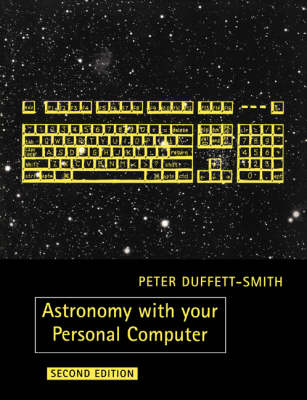
Astronomy with your Personal Computer
Cambridge University Press (Verlag)
978-0-521-38995-2 (ISBN)
The first edition of this very successful book was one winner of the Astronomical Society of the Pacific 'Astronomy Book of the Year' awards in 1986. There are a further seven subroutines in the new edition which can be linked in any combination with the existing twenty-six. Written in a portable version of BASIC, it enables the amateur astronomer to make calculations using a personal computer. The routines are not specific to any make of machine and are user friendly in that they require only a broad understanding of any particular problem. Since the programs themselves take care of details, they can be used for example to calculate the time of rising of any of the planets in any part of the world at any time in the future or past, or they may be used to find the circumstances of the next solar eclipse visible from a particular place. In fact, almost every problem likely to be encountered by the amateur astronomer can be solved by a suitable combination of the routines given in the book.
Preface; Using your personal computer for astronomy; Default value input routine; 'Y' or 'N' input routine MINSEC converts between decimal hours/degrees and min/sec form; JULDAY calendar date to Julian day number since 1900 Jan. 0.5; CALDAY Julian day number since 1900 Jan. 0.5 to calendar date; TIME converts between local civil and sidereal times; EQHOR converts between equatorial and horizon coordinates; HRANG converts between right ascension and hour-angle; OBLIQ calculates the value of the obliquity of the ecliptic; NUTAT finds corrections for nutation in longitude and obliquity; EQECL converts between equatorial and ecliptic coordinates; EQGAL converts between equatorial and galactic coordinates; GENCON converts between any of the coordinate systems; PRCESS1 approximate precession of equatorial coordinates; PRCESS2 rigorous precession of equatorial coordinates; PARALLX converts between geocentric and apparent position; REFRACT calculates the effect of atmospheric refraction; RISET finds the circumstances of rising and setting; ANOMALY solves Kepler's equation for elliptical motion; SUN finds the ecliptic coordinates of the Sun; SUNRS finds the circumstances of sunrise and sunset; PELMENT returns the orbital elements of the major planets; PLANS finds the position of a planet; MOON finds the position and parallax of the Moon; MOONRS finds the circumstances of moonrise and moonset; MOONNF finds the times of new and full moon; ECLIPSE finds the circumstances of lunar and solar eclipses; Displays an eclipse in graphical form; ELOSC finds positions from osculating elliptical elements; RELEM converts ecliptic orbital elements from one epoch to another; PCOMET finds the position of a comet from parabolic elements; PFIT finds parabolic elements from observations; EFIT finds elliptical elements from observations; List of variables; Bibliography; Index.
| Erscheint lt. Verlag | 29.6.1990 |
|---|---|
| Zusatzinfo | Worked examples or Exercises |
| Verlagsort | Cambridge |
| Sprache | englisch |
| Maße | 190 x 247 mm |
| Gewicht | 540 g |
| Themenwelt | Sachbuch/Ratgeber ► Natur / Technik ► Weltraum / Astronomie |
| Mathematik / Informatik ► Informatik ► Theorie / Studium | |
| ISBN-10 | 0-521-38995-X / 052138995X |
| ISBN-13 | 978-0-521-38995-2 / 9780521389952 |
| Zustand | Neuware |
| Haben Sie eine Frage zum Produkt? |
aus dem Bereich


